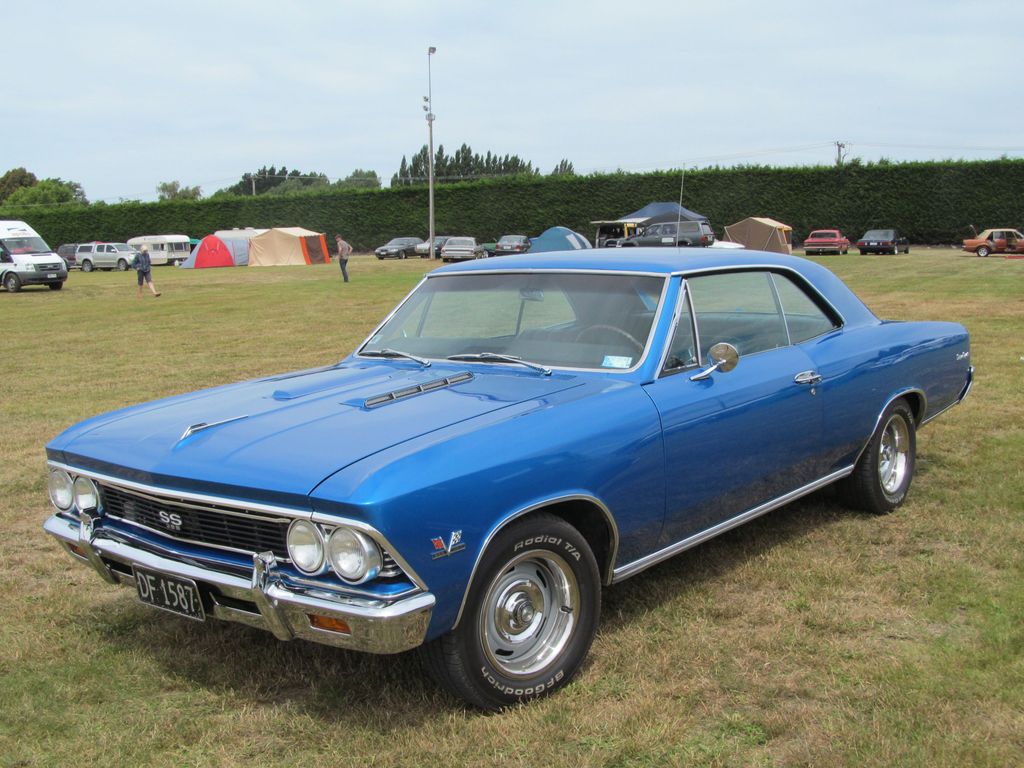
There’s a unique thrill that comes with the scent of high-octane fuel and burning rubber, a symphony of roaring engines that defines one of America’s most beloved motorsports: drag racing. For decades, this exhilarating pursuit of raw speed and quick acceleration has captured the hearts of enthusiasts, transforming ordinary straightaways into battlegrounds where legends are made. It’s a world where milliseconds matter and horsepower is king, a testament to engineering prowess and the sheer will to win.
From dusty airstrips to purpose-built tracks, the evolution of drag racing has been fueled by an insatiable desire for speed. Manufacturers, recognizing the powerful marketing potential of victory, poured resources into creating machines that were born to dominate the quarter-mile. These weren’t just cars; they were statements, meticulously crafted with a single-minded goal: to leave the competition in their rearview mirrors. The era of the muscle car truly set this stage, where Detroit’s finest battled it out, not just on the sales floor, but fiercely on the drag strip.
So, buckle up, because we’re about to embark on an exhilarating journey through the golden age of American muscle. We’re diving deep into the garages and onto the strips to celebrate the 15 most formidable factory drag cars – the untamed beasts that flat-out refused to lose a race. Each one a testament to engineering ingenuity, relentless power, and an unyielding competitive spirit, these are the machines that wrote themselves into the annals of drag racing history, one quarter-mile at a time.
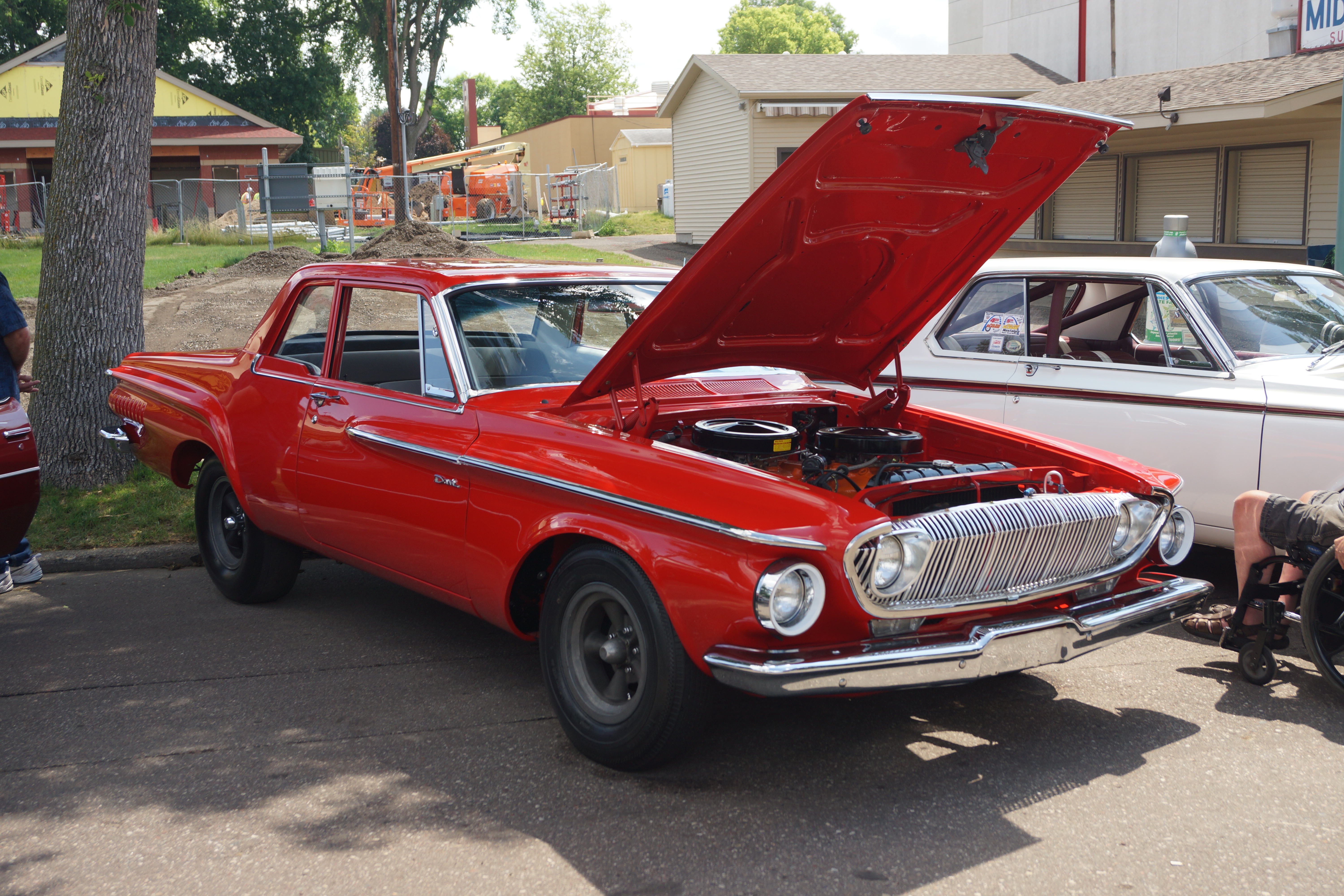
1. **1962 Dodge Dart Max Wedge 413**Kicking off our list of quarter-mile titans is the phenomenal 1962 Dodge Dart Max Wedge 413, a car so impactful it’s known by several legendary names like the 440, Ramcharger, or simply Four-Thirteen. Despite its tragically brief production run of just a single model year, its legacy on the drag strip is anything but short-lived. This was a machine built for one purpose: to dominate.
At its heart, the Dart’s top-tier 440 trim unleashed a ferocious 413-cubic-inch Max Wedge V-8 engine. This powerhouse was engineered to produce a staggering 420 horsepower and an earth-shaking 470 lb-ft of torque, figures that would make lesser cars tremble. It wasn’t just about raw numbers; it was about how that power translated to blistering speed.
Paired with a bulletproof 727 Torqueflite automatic transmission, the Dart was a master of acceleration. It could launch from 0 to 60 mph in a breathtaking 4.9 seconds and devour the quarter-mile in a mere 13.4 seconds, blazing past the finish line at a top speed of 121 mph. With only 214 units ever seeing the light of day, this Dodge remains an exceedingly rare and highly coveted piece of muscle car history.
While some might recall pop culture references, like The Beach Boys’ “Shut Down” song which playfully suggested a Corvette could defeat it, the reality on the asphalt was far different. There was no ambiguity about the Dart Max Wedge 413’s unparalleled dominance on the drag strip. It was, as described, a “true beast of its time,” consistently outclassing its rivals and cementing Mopar’s reputation for uncompromising performance well before the Hemi era even began.
Car Model Information: 2015 Dodge Dart SXT
Name: Dodge Dart
Caption: 1966 Dodge Dart GT 2-door hardtop
Manufacturer: Dodge
Production: 1959–1976 (US market)
ModelYears: 1960–1976 (US market)
Class: Full-size
Layout: FR layout
Predecessor: Dodge Coronet#Fourth generation (1957–1959)
Related: Plymouth Valiant,Chrysler Valiant,Dodge Phoenix
Successor: Dodge Aspen,Dodge Diplomat,Talbot Tagora
Categories: 1970s cars, All articles with unsourced statements, Articles with short description, Articles with unsourced statements from December 2023, Articles with unsourced statements from May 2025
Summary: The Dodge Dart is a line of passenger cars produced by Dodge from the 1959 to 1976 model years in North America, with production extended to later years in various other markets.
The production Dodge Dart was introduced as a lower-priced full-size model in 1960 and 1961, but became a mid-size car for one model year for 1962, and was then reduced to a compact for two generations, from 1963 to 1976.
Chrysler had first used ‘Dart’ name plates on two Italian styled show cars, in 1956 and 1957, before it became a Dodge model name. The Dart nameplate was resurrected for a Fiat-derived compact car that was introduced in 2012.
Get more information about: Dodge Dart
Buying a high-performing used car >>>
Brand: Dodge Model: Dart
Price: $9,995 Mileage: 143,082 mi.
Read more about: Unleashing the Beasts: 10 Legendary Muscle Cars That Defined the Roaring ’60s Automotive Golden Era
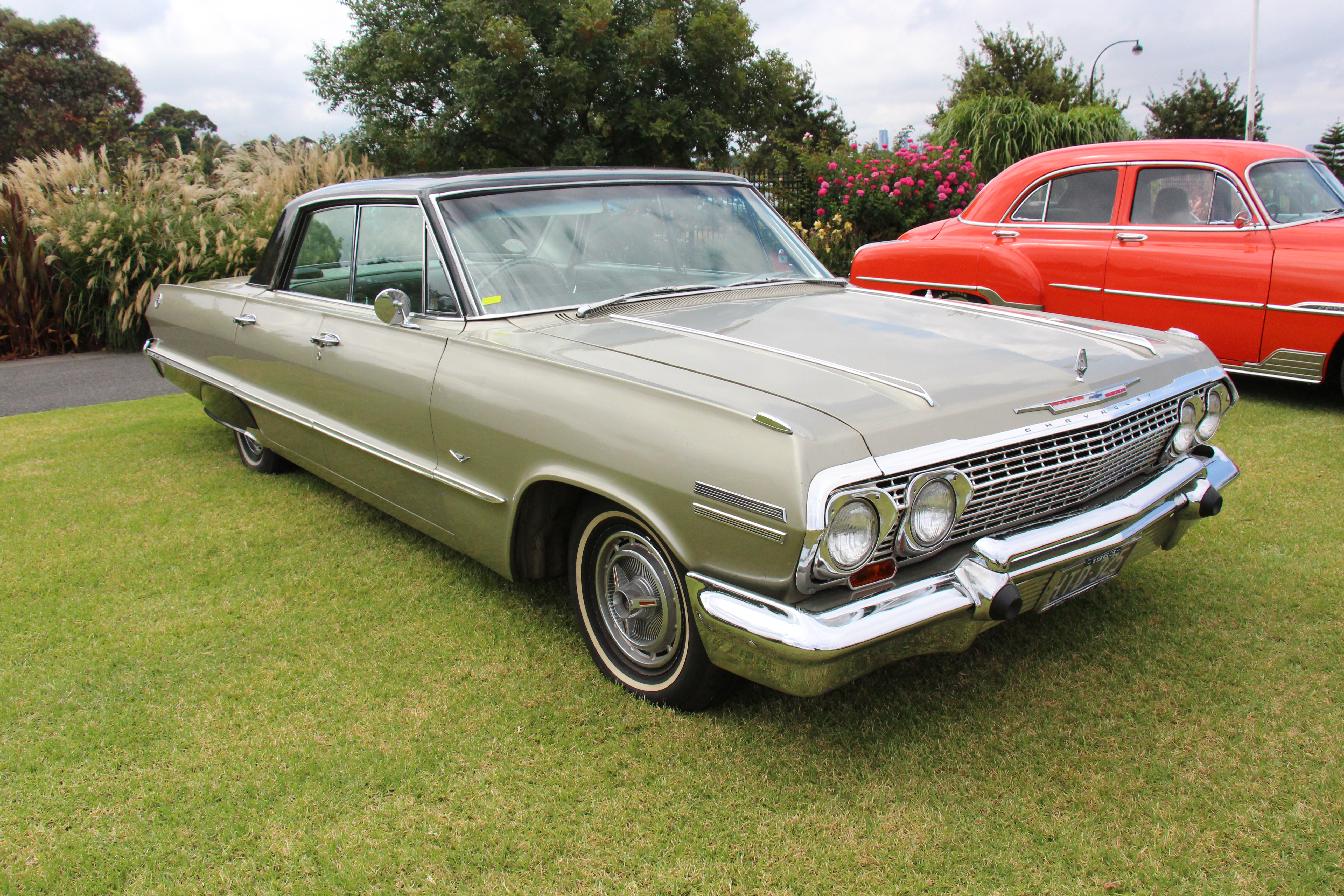
2. **1963 Chevrolet Impala Z11**Next up, we have the magnificent 1963 Chevrolet Impala Z11, a name that resonates with genuine drag racing legend. Unlike its predecessor, which gained fame through The Beach Boys’ song ‘409’, the Z11 elevated performance to an entirely new level, pushing boundaries with a combination of brute force and clever weight savings. This was Chevrolet’s answer to those who demanded nothing but the best on the quarter-mile.
Underneath its distinctive lines, the Z11 housed a monumental 427-cubic-inch V-8 engine, a true marvel of its time. This engineering masterpiece generated a colossal 430 horsepower and an astonishing 575 lb-ft of torque, a twisting force that could effortlessly launch the massive Impala down the strip. It was a beast designed to win, every single time.
What truly set the Z11 apart was its radical lightweight design, a strategic move by Chevrolet to shed every ounce of unnecessary mass. This included the innovative use of aluminum body panels, a testament to the factory’s dedication to track performance. Coupled with a four-speed manual transmission, this Impala could sprint from 0 to 60 mph in a blistering 4.3 seconds, tearing through the quarter-mile in just 10.8 seconds and topping out at 124 mph.
Designed with an almost obsessive focus on quarter-mile dominance, Chevrolet engineers meticulously stripped approximately 300 pounds from the Z11. This included even removing the front sway bar, bringing its total weight down to a lean 3,500 pounds. This aggressive weight reduction wasn’t just impressive; it was revolutionary, enabling the Impala to achieve a groundbreaking milestone as “the first stock car to surpass 120 mph in a quarter-mile run.” With only 57 units ever produced, the Z11 remains one of the rarest and most formidable muscle cars of its glorious era.
Car Model Information: 1966 Chevrolet Impala Base
Name: Chevrolet Impala
Caption: Fourth-generation model (1967)
Manufacturer: Chevrolet
Production: 1957–1985,1994–1996,1999–2020
ModelYears: 1958–1985,1994–1996,2000–2020
Predecessor: Chevrolet Bel Air,Chevrolet Lumina#Second generation (1995–2001)
Successor: Chevrolet SS,Chevrolet Caprice
Platform: GM B platform,GM W platform,GM W platform (GMX211) (2005–2013),GM Epsilon platform#Epsilon II
Class: Full-size car,Mid-size car
Layout: Front-engine, rear-wheel-drive layout,Front-engine, front-wheel-drive layout
Categories: 1960s cars, 1970s cars, 1980s cars, 1990s cars, 2000s cars
Summary: The Chevrolet Impala () is a full-size car that was built by Chevrolet for model years 1958 to 1985, 1994 to 1996, and 2000 to 2020. The Impala was Chevrolet’s popular flagship passenger car and was among the better-selling American-made automobiles in the United States.
For its debut in 1958, the Impala was distinguished from other models by its symmetrical triple taillights. The Chevrolet Caprice was introduced as a top-line Impala Sport Sedan for model year 1965, later becoming a separate series positioned above the Impala in 1966, which, in turn, remained above the Chevrolet Bel Air and the Chevrolet Biscayne. The Impala continued as Chevrolet’s most popular full-sized model through the mid-1980s. Between 1994 and 1996, the Impala was revised as a 5.7-liter V8–powered version of the Chevrolet Caprice Classic sedan.
In 2000, the Impala was reintroduced again as a mainstream front-wheel drive car. In February 2014, the 2014 Impala ranked No. 1 among Affordable Large Cars in U.S. News & World Report’s rankings. When the 10th generation of the Impala was introduced for the 2014 model year, the 9th generation was rebadged as the Impala Limited and sold only to fleet customers through 2016. During that time, both versions were sold in the United States and Canada. The 10th-generation Impala was also sold in the Middle East and South Korea.
Get more information about: Chevrolet Impala
Buying a high-performing used car >>>
Brand: Chevrolet Model: Impala
Price: $39,991 Mileage: 95,805 mi.
Read more about: Unearthing the Thunder: 10 Forgotten Drag Cars That Dominated the Strip and Deserve a Roaring Comeback

3. **1971 Ford Mustang Mach 1 Drag Pack**For years, Ford had chased a specific quarter-mile milestone, and in 1971, they finally shattered it with the incredible Mustang Mach 1 Drag Pack. This was the first Mustang to officially break into the 13-second range, a feat that had eluded even earlier high-performance legends like the Shelby GT350 and the mighty Boss 429. It was a declaration from Ford: the pony car could truly compete with the heavyweights.
Powering this track-focused Mustang was a potent 429-cubic-inch Super Cobra Jet V-8, an engine designed for one thing: raw, unadulterated speed. It produced an impressive 425 horsepower and a substantial 475 lb-ft of torque, figures that guaranteed exhilarating performance. Mated to a robust four-speed manual transmission, the Mach 1 Drag Pack could rocket from 0 to 60 mph in a swift 5.1 seconds.
The Mach 1 Drag Pack’s quarter-mile time of 13.8 seconds, coupled with a top speed of 125 mph, solidified its position as one of the fastest factory-built Mustangs of its time. This wasn’t just a powerful engine; it was a complete performance package, meticulously assembled to dominate the drag strip and prove the Mustang’s mettle against the fiercest competition.
To achieve this breakthrough performance, Ford wasn’t content with just a powerful engine. They outfitted the Mach 1 Drag Pack with a host of essential racing enhancements, including a quick-shifting Hurst shifter, reliable disc brakes, precise power steering, and aggressive 4.30 rear gears. These thoughtful modifications allowed the Mustang to stand toe-to-toe with established muscle car titans like the Chevelle SS and the Plymouth Road Runner. With a mere 531 units ever produced, this Mach 1 Drag Pack remains a rare and profoundly significant model in Mustang history, a true testament to Ford’s unwavering commitment to quarter-mile glory.
Read more about: Beyond the Bandit: 12 Legendary Pontiacs You Need to Know (and Possibly Own) Before They’re Gone Forever

4. **1964 Ford Fairlane Thunderbolt**If ever there was a car built with uncompromising dedication to drag racing, it was the 1964 Ford Fairlane Thunderbolt. This wasn’t just a Fairlane; it was a purpose-built drag racing machine, a veritable brute created by shoehorning a massive 427-cubic-inch V-8 engine into a surprisingly compact package. Ford’s intentions were so clear that they even affixed a metal disclaimer inside the car, boldly warning buyers that it was “designed for racing rather than comfort or refinement.”
Beneath its unassuming exterior lay a heart of pure thunder. The 427 High Riser V8, officially rated at 425 horsepower, was widely known among racers to deliver substantially more in practice, churning out an incredible 480 lb-ft of torque. Power was channeled through a rugged four-speed manual transmission, allowing the Thunderbolt to rocket from 0 to 60 mph in just 4.7 seconds, a figure that would humble many sports cars of the era.
With a blistering quarter-mile time of 11.6 seconds and a top speed of 130 mph, the Thunderbolt quickly established itself as one of the most dominant muscle cars on any drag strip it graced. Its sheer, unadulterated power made it a formidable, almost unbeatable force in competition, a fact powerfully demonstrated at the 1964 NHRA Winternationals. In a stunning display of internal dominance, two Thunderbolts squared off in the final round, with Gaspar “Gas” Ronda ultimately securing victory with an 11.78-second pass and claiming the coveted NHRA Top Stock championship.
Ford only produced approximately 100 of these magnificent machines, all explicitly intended for NHRA Super Stock competition. To achieve its phenomenal speed, the Thunderbolt incorporated lightweight construction, featuring fiberglass body panels, Plexiglas windows, and thoroughly stripped interiors to keep weight to an absolute minimum. These modifications made them “brutally quick off the line.” With quarter-mile times consistently “dipping into the low-11s in factory trim,” the Thunderbolt was indeed “less a street car and more a factory drag weapon,” a legendary vehicle built solely to leave the competition choking on its dust.
Car Model Information: 1956 Ford Fairlane Sedan
Name: Ford Fairlane
Aka: Ford LTD
Manufacturer: Ford Australia
Production: 1959–2007
Assembly: Broadmeadows Assembly Plant,Eagle Farm
Class: Full-size luxury car
BodyStyle: sedan (car)
Related: Ford Falcon (Australia)
Categories: 1960s cars, 1970s cars, 1980s cars, 1990s cars, 2000s cars
Summary: The Ford Fairlane and LTD are full-sized luxury vehicles produced in a series of models by Ford Australia between 1959 (with the LTD commencing production in 1973) and 2007.
From 1959 to 1964, the Fairlane was a locally assembled version of the American Ford Fairlane, which had taken its name from Henry Ford’s estate, Fair Lane, near Dearborn, Michigan. The car was Ford Australia’s top-of-the-range model until replaced by an Australian-assembled version of the full-sized American Ford Galaxie. In 1967, Ford Australia reintroduced the Fairlane, this time as an Australian-developed, luxury, long-wheelbase version of its mainstream Falcon/Fairmont, positioned between the Falcon and the Galaxie. The locally assembled Galaxie evolved into the LTD which was itself replaced in 1973 by an Australian-developed, Fairlane-based model, also known as the Ford LTD. Unlike its designation in Australia, in North America the LTD was not considered a luxury vehicle. In Australia, “LTD” originally stood for “Lincoln Type Design”, although Ford Australia later promoted a connection with the meaning “Limited”.
The Fairlane and LTD competed in the marketplace with the Holden Brougham (1968–1971), the Statesman (1971–1984), and later with the Holden Statesman and Caprice (1990–2007).
Ford produced the Fairlane/LTD at the Broadmeadows Assembly Plant and Eagle Farm, Queensland, in the early years. Until around March/April 1978 with the upcoming release of the XD Falcon and its derivatives, Ford consolidated Falcon production at Campbellfield and Fairlane/LTD manufacturing to Eagle Farm. Around the release of the next generation during the EA Falcon era (1988), Eagle Farm ceased manufacture of cars and only produced heavy trucks until its closure in 1998.
Get more information about: Ford Fairlane (Australia)
Buying a high-performing used car >>>
Brand: Ford Model: Fairlane
Price: $18,991 Mileage: 88,500 mi.
Read more about: A True Classic: The ’60s? These 12 Muscle Cars Were the Absolute Kings of Horsepower and the Drag Strip.
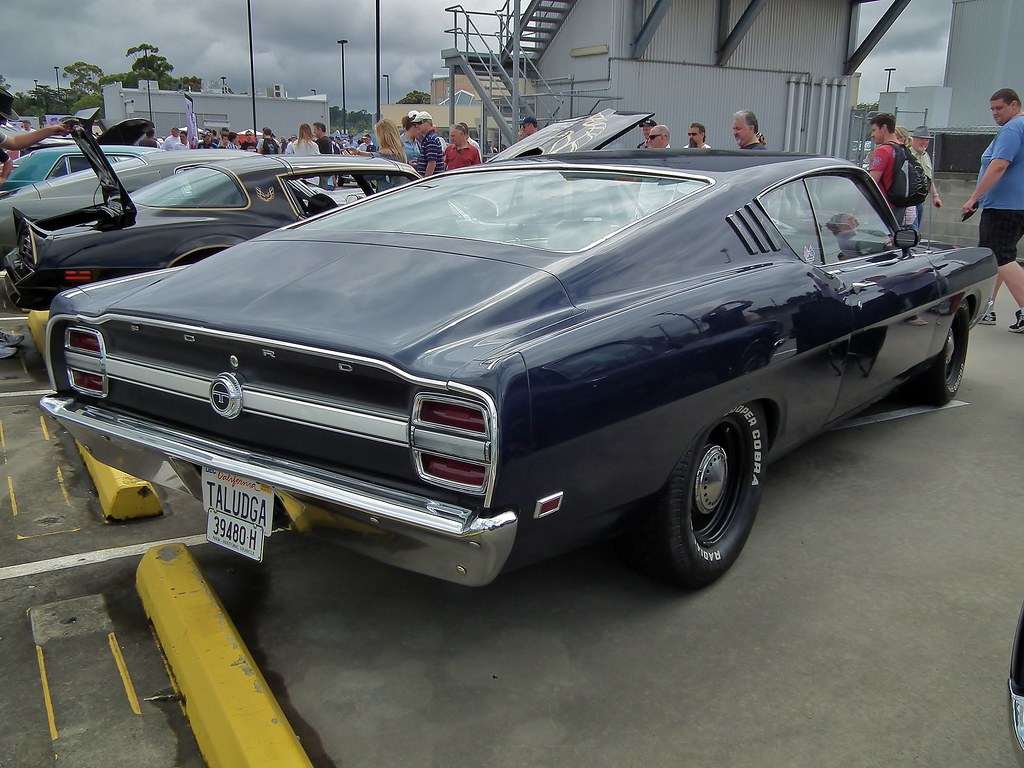
5. **1969 Ford Torino Talladega**The roaring tracks of NASCAR often breed some of the most specialized and aggressive machines, and the 1969 Ford Torino Talladega is a prime example. This was an “aero car” meticulously engineered to dominate the high-speed oval, a direct response to the need for ultimate aerodynamic efficiency. To meet the stringent racing homologation regulations, Ford graciously released 500 street-legal versions to the public, though their true purpose was always the professional competition track.
Beneath its sleek, wind-cheating bodywork, the Talladega was powered by a formidable 428-cubic-inch Cobra Jet V-8 engine. While perhaps not as overtly brutish as some of its drag-focused brethren, it still produced a robust 335 horsepower and a solid 440 lb-ft of torque. This potent powertrain allowed the Talladega to accelerate from 0 to 60 mph in a respectable 5.5 seconds and complete the quarter-mile in 14.4 seconds, reaching a top speed of 130 mph.
While explicitly designed for oval racing, many savvy buyers quickly recognized its inherent drag racing potential. Its powerful engine and slippery aerodynamic design meant that even when repurposed for the quarter-mile, the Talladega was a serious contender. It wasn’t uncommon to see these “aero cars” lining up at the Christmas tree, ready to prove their versatility.
On the NASCAR circuits, the Torino Talladega was an unstoppable force, a true juggernaut. It roared to victory in an astonishing 29 NASCAR races across the 1969 and 1970 seasons, a record-breaking performance that solidified its legendary status and proved its aerodynamic superiority. Its overwhelming success even compelled its arch-rival, Dodge, to develop the iconic Charger Daytona, complete with its distinctive nose cone and massive wing, just to keep pace with Ford’s dominant advantage. The Torino Talladega remains one of Ford’s most significant contributions to motorsport history, blending speed, power, and race-proven performance into a sought-after piece of muscle car lore.
Car Model Information: 2024 Toyota Camry SE
Name: Ford Torino Talladega
Manufacturer: Ford Motor Company
Related: Mercury Cyclone Spoiler II,Ford Torino
Production: 1969
ModelYears: 1969
Class: Race car
BodyStyle: fastback
Designer: FoMoCo
Categories: All articles lacking in-text citations, All articles needing additional references, All articles with specifically marked weasel-worded phrases, All articles with unsourced statements, Articles lacking in-text citations from July 2015
Summary: The Ford Torino Talladega is a muscle car that was produced by Ford only during the first few weeks of 1969. It was named for the Talladega Superspeedway, which opened the same year. The Talladega was a special, more aerodynamic version of the Torino / Fairlane produced specifically to make Ford even more competitive in NASCAR racing, and it was sold to the public only because homologation rules required a certain minimum number of cars (500 in 1969) be produced and made available.
All production Talladegas were equipped with the new 428 Cobra Jet, which, while very powerful and reliable, was intended as a street engine for Ford’s muscle cars, as it developed high torque at low RPMs, rather than being a high-revving race engine. Early racing builds were powered by the FE 427 side oiler that had been Ford’s main racing engine since 1963; later versions received the Boss 429 engine after it had been homologated in the 1969 Ford Mustang Boss 429.
A largely equivalent vehicle was also sold under the Mercury marque as the Cyclone Spoiler II.
Get more information about: Ford Torino Talladega
Buying a high-performing used car >>>
Brand: Ford Model: Torino Talladega
Price: $23,188 Mileage: 64,336 mi.
Read more about: 16 Strange Muscle Cars That Deserve a Second Look
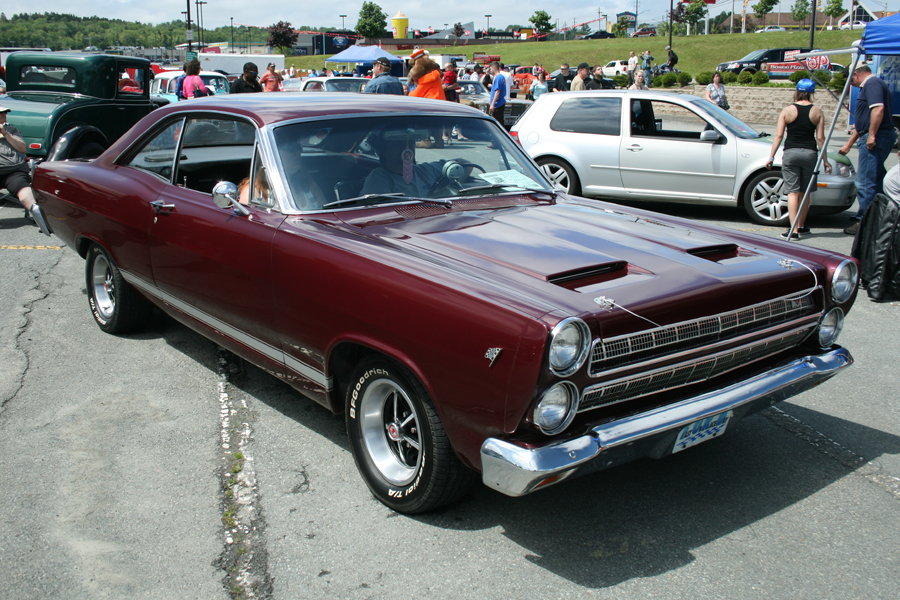
6. **1964 Mercury Comet Cyclone GT**Hot on the heels of the Ford Fairlane Thunderbolt, its sibling division, Mercury, unleashed its own quarter-mile monster: the 1964 Comet Cyclone GT. This was no mere copycat; it was an exceedingly rare and powerful factory drag car, built with the same uncompromising spirit and an even more exclusive production run. Imagine the same ferocious power, but in a package that fewer hands would ever get to grasp.
Sharing the monstrous 427-cubic-inch V-8 engine with its Ford counterpart, the Comet Cyclone GT also pumped out a staggering 425 horsepower and 480 lb-ft of torque. However, its rarity truly set it apart: with only 50 units produced, it became an even more coveted and elusive machine compared to the Thunderbolt’s 500. This was exclusivity and brute force, perfectly blended for the serious racer.
Equipped with a precise four-speed manual transmission, this Mercury was an absolute missile off the line. It could launch from 0 to 60 mph in an astonishing 4.2 seconds, devour the quarter-mile in a blistering 12.0 seconds, and hit an impressive top speed of 133 mph. These numbers weren’t accidental; they were the result of meticulous engineering for competition, designed to ensure dominance in its specific racing class.
Unlike the Thunderbolt, which carved its legend in the NHRA’s Super Stock division, the Comet Cyclone GT was engineered to excel in the fiercely competitive A/FX (Factory Experimental) class. Here, it proved to be a formidable contender, mirroring the Thunderbolt’s near-unbeatable status on the track. While most of these mechanical marvels were destined for professional racing teams, a fortunate few amateurs managed to acquire one, transforming their local streets into a stage for one of the most extreme street racers of the era. Its limited production and blistering high-performance capabilities firmly cement its place as one of the most coveted and effective drag cars of the 1960s.
Car Model Information: 2024 Toyota Camry SE
Name: Mercury Comet
Aka: Comet
Caption: 1964 Mercury Comet Caliente coupé
Manufacturer: Mercury (automobile)
Production: 1960–1961 (“Comet”), 1962–1977 (“Mercury Comet”)
Assembly: Oakville, Ontario,Canada,Claycomo, Missouri,United States,Lorain, Ohio,United States,Milpitas, California,United States,Wayne, Michigan,United States
Class: Compact car
Related: Ford Fairlane (Americas),Ford Falcon (North America),Ford Maverick (North America),Ford Torino,Mercury Montego
Layout: FR layout
Successor: Mercury Zephyr,Mercury Monarch
Categories: 1960s cars, 1970s cars, All articles with unsourced statements, Articles with short description, Articles with unsourced statements from August 2019
Summary: The Mercury Comet is an automobile that was produced by Mercury from 1962–1969 and 1971–1977 — variously as either a compact or an intermediate car. For 1960 and 1961, Comet was its own brand sold by Lincoln-Mercury “Comet”.
The compact Comet shared a naming convention associated with the ongoing Space Race of the early 1960s with the Mercury Meteor, which was introduced as the base-trim full-size Mercury sedan.
The Comet was initially based on the compact Ford Falcon, then on the intermediate Ford Fairlane, and finally on the compact Ford Maverick. Early Comets received better-grade interior trim than concurrent Falcons, and a slightly longer wheelbase.
Get more information about: Mercury Comet
Buying a high-performing used car >>>
Brand: Mercury Model: Comet Cyclone GT
Price: $23,188 Mileage: 64,336 mi.
Read more about: 16 Strange Muscle Cars That Deserve a Second Look

7. **1973 Pontiac Firebird Trans Am 455 Super Duty**Arriving as one of the last true fire-breathing muscle cars of its era, the 1973 Pontiac Firebird Trans Am 455 Super Duty was a defiant roar against increasing emissions regulations and corporate restrictions. This powerful machine emerged as a direct response to General Motors’ long-standing ban on engines over 400 cubic inches in mid-size cars, a policy that had, for years, seen Firebirds lag behind the raw performance of their Ford and Mopar rivals. When GM finally lifted the ban in 1970, Pontiac wasted no time in unleashing their pent-up performance ambitions.
Pontiac seized the opportunity to develop a truly high-output engine, resulting in the legendary 455-cubic-inch LS2 V-8 specifically for the Firebird Trans Am Super Duty. This magnificent powerplant, though rated at 310 horsepower and 395 lb-ft of torque, was famously underrated, with many believing its true output was significantly higher. Regardless, it provided enough thrust to propel the car from 0 to 60 mph in a swift 5.6 seconds, conquer the quarter-mile in a respectable 13.5 seconds, and achieve an impressive top speed of 155 mph.
While GM may have arrived late to the ultimate high-performance game, Pontiac made up for lost time with the 455 Super Duty. It swiftly became recognized as “one of the last truly fast American muscle cars before the performance decline of the mid-to-late 1970s.” This car wasn’t just about speed; it was a symbol of resistance, pushing boundaries even as the tides of emissions regulations and looming fuel crises began to turn against pure, unadulterated power.
With only 252 units ever produced, this Firebird remains an iconic collector’s car, a tangible representation of Pontiac’s unwavering determination to build performance legends. Despite making its entrance at the tail end of the classic muscle car era, the 1973 Firebird Trans Am 455 Super Duty left an indelible mark, solidifying its legacy as one of the fastest and most powerful American cars of its remarkable time. It truly refused to go quietly into that good night, instead choosing to leave a blazing trail.
The adrenaline has certainly been pumping, but hold on tight, because our quarter-mile sprint isn’t over yet! We’ve already saluted seven magnificent machines, but there are more legends lurking in the shadows, waiting to light up the Christmas tree. Now, prepare to meet the next eight iconic muscle cars that absolutely refused to back down, each one a symphony of roaring horsepower, ingenious engineering, and an unyielding will to dominate the drag strip.
Car Model Information: 2024 Toyota Camry SE
Name: Pontiac Firebird
Caption: The second, third, and fourth generations of,the Pontiac Firebird Trans Am
Manufacturer: Pontiac (automobile)
Production: February 23, 1967 – August 30, 2002
ModelYears: 1967 – 2002
Class: Pony car,Muscle car
Platform: GM F platform
Related: Chevrolet Camaro
Layout: Front engine, rear-wheel-drive layout
Categories: 1970s cars, 1980s cars, 1990s cars, 2000s cars, All articles with dead external links
Summary: The Pontiac Firebird is an American automobile built and produced by Pontiac from the 1967 to 2002 model years. Designed as a pony car to compete with the Ford Mustang, it was introduced on February 23, 1967, five months after GM’s Chevrolet division’s platform-sharing Camaro. This also coincided with the release of the 1967 Mercury Cougar, Ford’s upscale, platform-sharing version of the Mustang.
The name “Firebird” was also previously used by GM for the General Motors Firebird series of concept cars in the 1950s.
Get more information about: Pontiac Firebird
Buying a high-performing used car >>>
Brand: Pontiac Model: Firebird Trans Am
Price: $23,188 Mileage: 64,336 mi.
Read more about: Beyond the Bandit: 12 Legendary Pontiacs You Need to Know (and Possibly Own) Before They’re Gone Forever

8. **1965 Dodge Coronet A990**In 1965, Dodge unveiled the Coronet A990, a masterclass in exploiting NHRA Super Stock class rules. Unable to use lightweight materials or freely place engines, Dodge engineers ingeniously shortened the wheelbase to 115 inches. This smart move positioned the engine closer to the car’s center, optimizing weight distribution and securing a competitive edge from the factory. It was a subtle yet brilliant stroke of engineering.
Under the hood, a specially tuned 426 Hemi V-8 roared to life, officially rated at 500 horsepower and an astounding 490 lb-ft of torque. This raw power translated into blistering speed: an estimated 0-60 mph in 4.3 seconds, a quarter-mile dash in 11.8 seconds, and an incredible top speed of 160 mph. These numbers weren’t just impressive; they were a declaration of absolute dominance.
Dodge’s commitment to speed extended to innovative weight reduction. “Chemical milling” thinned steel in crucial body panels by over 60 percent. Combined with a completely stripped interior, the A990 weighed a mere 3,408 pounds. It was a lean, purpose-built B-body, crafted solely for victory.
With only 101 units produced, the 1965 Dodge Coronet A990 remains an exceptionally rare and formidable drag racing machine. It showcased Dodge’s ingenious ability to bend rules for competitive advantage, proving engineering creativity led to unparalleled performance. This car didn’t just win; it redefined what was possible, cementing its legacy as a true quarter-mile legend.
Car Model Information: 2024 Toyota Camry SE
Buying a high-performing used car >>>
Brand: Dodge Model: Coronet A990
Price: $23,188 Mileage: 64,336 mi.
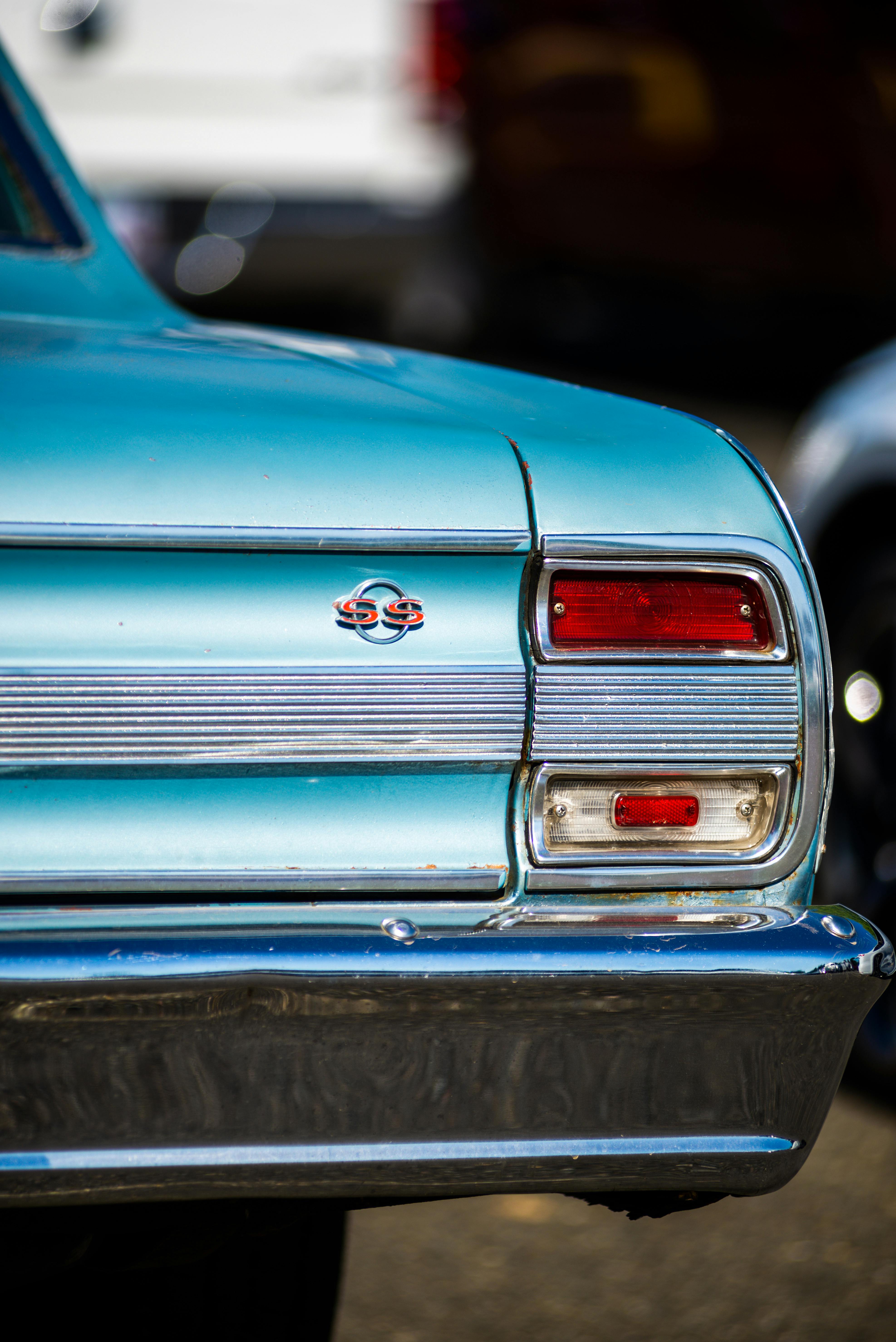
9. **1965 Chevrolet Chevelle Z16 SS**While the 1970 Chevelle SS often steals the limelight, the 1965 Chevrolet Chevelle Z16 SS was a distinctly raw and exclusive machine, demanding recognition. This wasn’t merely a car; it was Chevrolet’s bold declaration, designed to ignite excitement for their potent new 396-cubic-inch Turbo Jet V-8. It heralded a new era for Chevelle performance.
Despite its “Turbo Jet” moniker, this engine was pure, naturally aspirated American muscle, delivering an impressive 375 horsepower and a solid 420 lb-ft of torque. This setup propelled the Z16 SS from 0 to 60 mph in an estimated 5.5 seconds, completing the quarter-mile in 14.1 seconds, and reaching a commanding top speed of 160 mph. These figures were formidable, especially considering corporate restrictions.
What truly set the Z16 SS apart was its defiance of General Motors’ strict internal bans on racing and large engines. Chevrolet engineers, despite limitations, crafted a contender that bravely held its own against rivals free from such constraints. It was a testament to sheer engineering grit, proving Chevy could build a serious high-performance machine.
With a production run of just 201 units, the 1965 Z16 SS was a rare jewel, a true street racer with incredible high-speed potential. Though often overshadowed by later models, the Z16 SS laid crucial groundwork for future high-performance Chevelles. It solidified its place as a legendary muscle car, proving undeniable performance speaks volumes, regardless of production.
Car Model Information: 2024 Toyota Camry SE
Name: Chevrolet Malibu
Manufacturer: Chevrolet
ModelYears: 1964–1983,1997–2025
Class: Mid-size car
Layout: Front-engine, rear-wheel-drive layout
Predecessor: Chevrolet Chevelle
Successor: Chevrolet Celebrity
Caption: Ninth generation Chevrolet Malibu
Categories: 1970s cars, 1980s cars, 1990s cars, 2000s cars, 2010s cars
Summary: The Chevrolet Malibu is a mid-size car that was manufactured and marketed by Chevrolet from 1964 to 1983 and from 1997 to 2025. The Malibu began as a trim-level of the Chevrolet Chevelle, becoming its own model line in 1978. Originally a rear-wheel-drive intermediate, GM revived the Malibu nameplate as a front-wheel-drive car in 1997.
Named after the coastal community of Malibu, California, the Malibu has been marketed primarily in North America, with the eighth generation introduced globally. Malibu production in the US ended in November 2024, as the Fairfax plant is being retooled for the upcoming second-generation Chevrolet Bolt. The Malibu is now the last sedan to have been sold by Chevrolet in the US.
Get more information about: Chevrolet Malibu
Buying a high-performing used car >>>
Brand: Chevrolet Model: Chevelle Z16 SS
Price: $23,188 Mileage: 64,336 mi.
Read more about: Revving Up History: Unearthing the Forgotten Engines That Forged American Muscle Legends
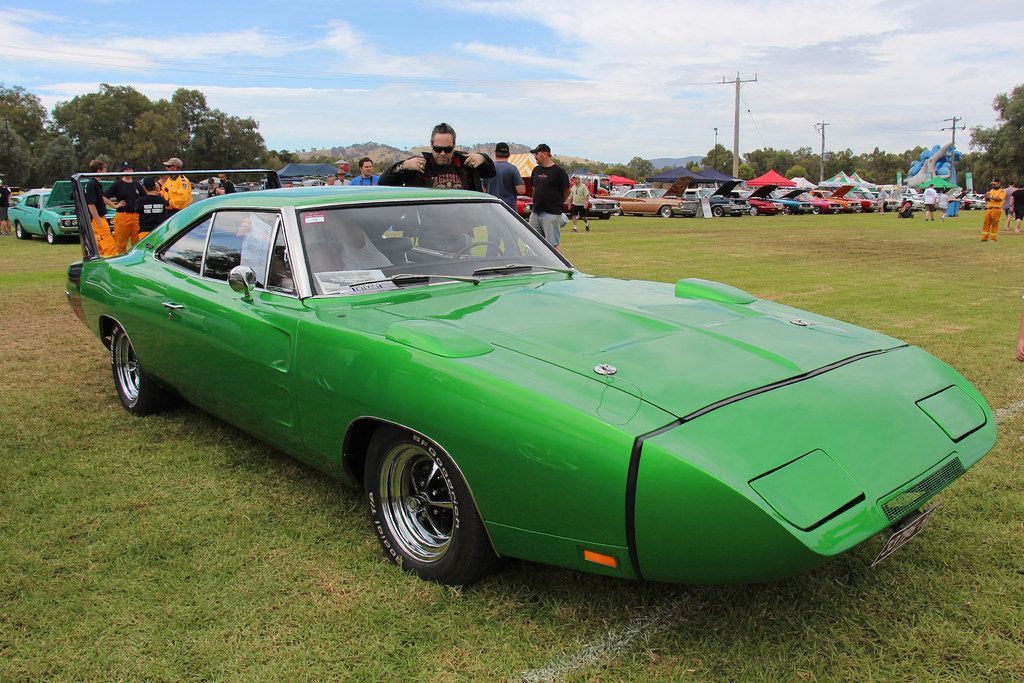
10. **1969 Dodge Charger Daytona**The 1969 Dodge Charger Daytona, a “Winged Warrior,” was an aerodynamic marvel born from NASCAR’s fiercely competitive tracks, a direct counter to Ford’s dominant Torino Talladega. To satisfy racing homologation rules, Dodge released these distinctively styled machines to the public. While precise production numbers remain debated, these road-legal Daytonas quickly became renowned as some of the fastest factory drag cars available.
Under that iconic nose cone resided the legendary 426 Hemi V-8. This formidable engine unleashed a ferocious 425 horsepower and a ground-shaking 490 lb-ft of torque. This immense power allowed the Daytona to launch from 0 to 60 mph in a thrilling 5.3 seconds, conquer the quarter-mile in a mere 13.7 seconds, and achieve an astonishing top speed of 170 mph. It was a blur of power and aerodynamic perfection.
Though primarily engineered for high-speed oval racing, the Charger Daytona proved remarkably adaptable on the quarter-mile. Legendary street racer Big Willie Robinson famously dominated the Los Angeles scene with his ’69 Daytona, cementing its reputation beyond the track. This dual prowess solidified its place in automotive lore.
The Charger Daytona’s profound impact on automotive history is undeniable. Its unmatched speed, iconic design, and significant historical footprint make the 1969 Charger Daytona not just one of the fastest, but *the* fastest factory drag car of the classic muscle car era. It truly represents peak aerodynamic innovation married with raw muscle, a pinnacle of performance.
Car Model Information: 2024 Toyota Camry SE
Name: Dodge Charger Daytona
Caption: 1969 Dodge Charger Daytona
Manufacturer: Dodge
Production: 1969–1970,2006–2009,2013,2017–2023
Class: Muscle car
Layout: FR layout
Categories: 1960s cars, 1970s cars, 2000s cars, All articles needing additional references, All articles with unsourced statements
Summary: Dodge produced three separate models with the name Dodge Charger Daytona, all of which were modified Dodge Chargers. The name was taken from Daytona Beach, Florida, which was an early center for auto racing and still hosts the Daytona 500, NASCAR’s premier event. The original Dodge Charger Daytona was designed to beat the competition in NASCAR racing. It was the first NASCAR vehicle to reach 200 miles per hour, which was a major milestone at the time.
Get more information about: Dodge Charger Daytona
Buying a high-performing used car >>>
Brand: Dodge Model: Charger Daytona
Price: $23,188 Mileage: 64,336 mi.
Read more about: Classic Cars Skyrocketing in Value: 26 Models Worth Investing In
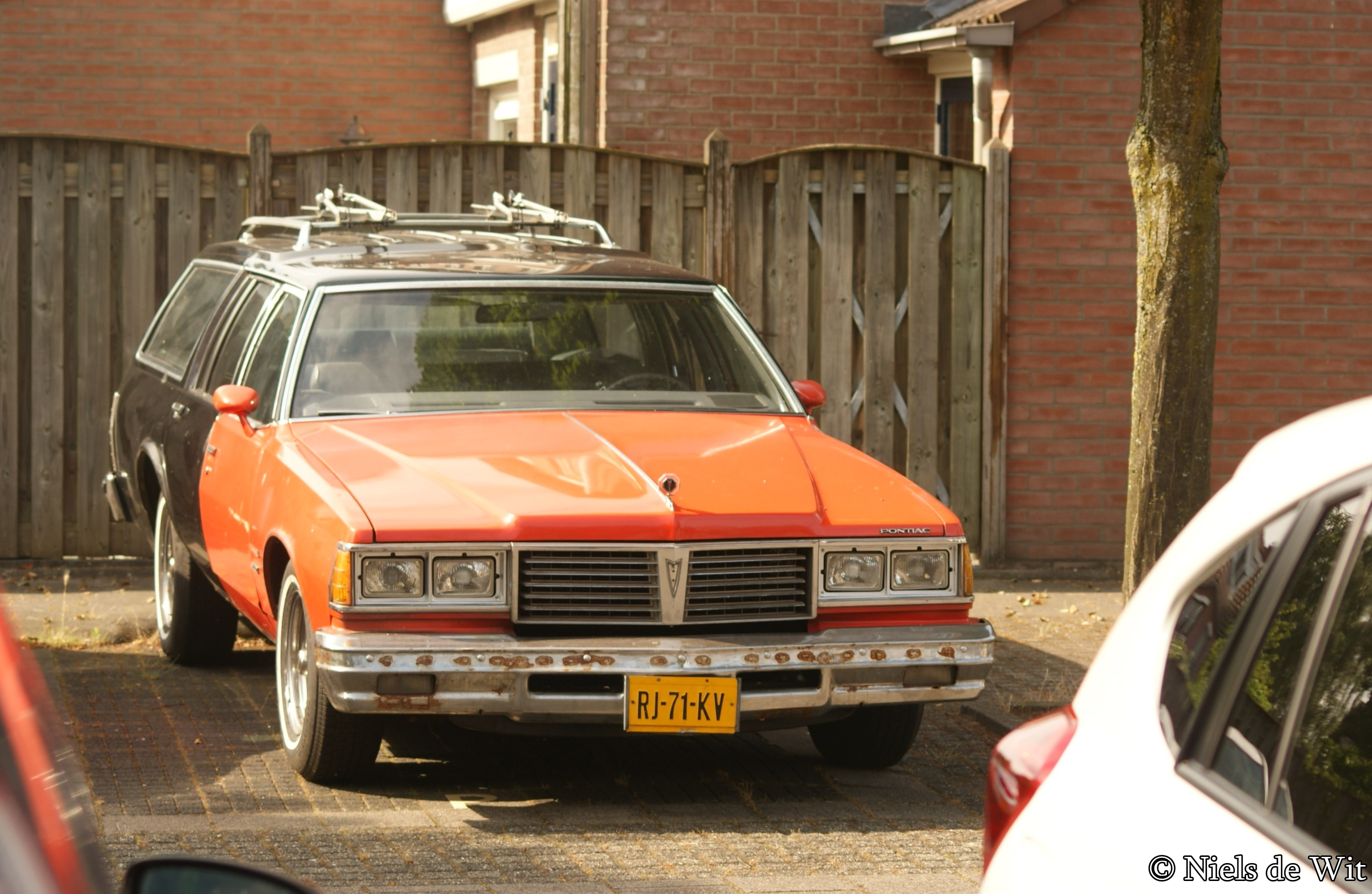
11. **1962 Pontiac Catalina 421 “Swiss Cheese”**In the early 1960s, Pontiac recognized the potent marketing power of racing, embracing the “Win on Sunday, Sell on Monday” philosophy. While strong in NASCAR, their NHRA drag racing presence needed a boost. The two-door Catalina, with its capable 421 V8, provided a solid starting point, but it desperately required more power and radical weight loss.
Thus began the audacious project that birthed the “Swiss Cheese” Catalina. Engineers embarked on an extreme weight-shedding mission, crafting numerous aluminum components like bumpers, fenders, and hoods to trim 159 pounds. The car earned its nickname by having holes literally drilled into its frame, squeezing out every last ounce of unnecessary mass. This was an obsessive pursuit of lightness.
Paired with this radical diet was a high-compression 421 V8 engine, expertly tuned to unleash a formidable 410 horsepower. This potent combination transformed the Catalinas into lightning-quick machines. Unsurprisingly, the “Swiss Cheese” models absolutely dominated drag strips, securing victory after victory and generating invaluable publicity for Pontiac. They showcased how an ordinary car could be re-engineered into an uncompromising drag weapon.
Pontiac campaigned these specialized cars for two glorious years, 1962 and 1963, establishing their drag racing credentials. Only 14 “Swiss Cheese” Catalinas were ever built, each entrusted to esteemed drag racers. Today, these incredibly rare legends are highly coveted, their prices often nearing $1 million, a testament to their unique history, engineering audacity, and undeniable quarter-mile performance.
Car Model Information: 1963 Pontiac Catalina Sport Coupe
Caption: 1970 Pontiac Catalina hardtop coupe
Name: Pontiac Catalina
Manufacturer: Pontiac (automobile)
Production: 1950–1981
Platform: GM B platform
Predecessor: Pontiac Chieftain
Successor: Pontiac Bonneville
Class: Full-size car
Layout: FR layout
Categories: 1960s cars, 1970s cars, 1980s cars, All articles needing additional references, All articles with unsourced statements
Summary: The Pontiac Catalina is a full-size automobile produced by Pontiac from 1950 to 1981. Initially, the name was a trim line on hardtop body styles, first appearing in the 1950 Chieftain Eight and DeLuxe Eight lines. In 1959, it became a separate model as the “entry-level” full-size Pontiac.
The Catalina was Pontiac’s most popular model, available in multiple body styles, and served as the donor platform for the popular Pontiac Grand Prix, Pontiac 2+2, Pontiac Ventura, and the Pontiac Safari station wagon.
When the second-generation Pontiac Tempest was introduced in 1964, lessons learned from the Catalina’s introduction of the Grand Prix led to the introduction of the Pontiac GTO, to include the 389 cu in (6.4 L) Pontiac V8.
Get more information about: Pontiac Catalina
Buying a high-performing used car >>>
Brand: Pontiac Model: Catalina
Price: $38,981 Mileage: 38,300 mi.
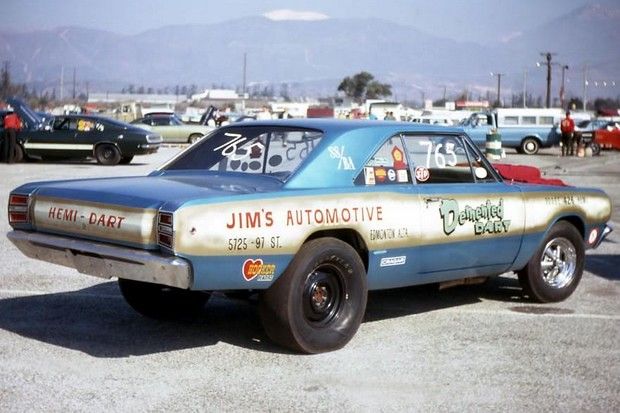
12. **1968 Dodge Hemi Dart**For drag racing aficionados of the late 1960s, the “Hemi Dart” was a name whispered with reverence and dread. The 1968 Dodge Hemi Dart wasn’t a street machine that dabbled in racing; it was a purebred, purpose-built drag monster, engineered solely to decimate the quarter-mile. Dodge commissioned Hurst Performance to meticulously transform Dart GTS models into a limited series of pure speed.
Under the hood, the legendary 426 Hemi held court. Officially rated at a conservative 425 horsepower, seasoned racers knew its true output soared well over 500 horsepower in competition trim. This wasn’t just about the engine; it was the entire package. Acid-dipped body panels, lightweight bucket seats, and an utterly stripped interior—luxury and comfort were absent, replaced by a single-minded focus on winning.
This relentless dedication to power and minimal weight paid off handsomely. Straight from the factory, equipped with proper slicks, the Hemi Dart was capable of dipping into the astonishing 10-second quarter-mile range. That’s a performance benchmark breathtaking even today! Few of these mechanical gladiators survived unmodified, as virtually every unit was immediately pressed into serious drag duty, earning its place in history.
The 1968 Dodge Hemi Dart stands as a powerful symbol of the extreme lengths manufacturers went to create a purpose-built winner. Its rarity, fearsome performance, and uncompromising approach cemented its status as one of the most iconic and dominant factory drag cars ever unleashed. It truly was a raw, untamed beast, a legend forged on the asphalt in pursuit of absolute speed.
Car Model Information: 2015 Dodge Dart SXT
Name: Dodge Dart
Caption: 1966 Dodge Dart GT 2-door hardtop
Manufacturer: Dodge
Production: 1959–1976 (US market)
ModelYears: 1960–1976 (US market)
Class: Full-size
Layout: FR layout
Predecessor: Dodge Coronet#Fourth generation (1957–1959)
Related: Plymouth Valiant,Chrysler Valiant,Dodge Phoenix
Successor: Dodge Aspen,Dodge Diplomat,Talbot Tagora
Categories: 1970s cars, All articles with unsourced statements, Articles with short description, Articles with unsourced statements from December 2023, Articles with unsourced statements from May 2025
Summary: The Dodge Dart is a line of passenger cars produced by Dodge from the 1959 to 1976 model years in North America, with production extended to later years in various other markets.
The production Dodge Dart was introduced as a lower-priced full-size model in 1960 and 1961, but became a mid-size car for one model year for 1962, and was then reduced to a compact for two generations, from 1963 to 1976.
Chrysler had first used ‘Dart’ name plates on two Italian styled show cars, in 1956 and 1957, before it became a Dodge model name. The Dart nameplate was resurrected for a Fiat-derived compact car that was introduced in 2012.
Get more information about: Dodge Dart
Buying a high-performing used car >>>
Brand: Dodge Model: Dart
Price: $9,995 Mileage: 143,082 mi.
Read more about: Beyond the Icons: 13 Overlooked Pony Cars That Command Respect and Deserve a Second Look
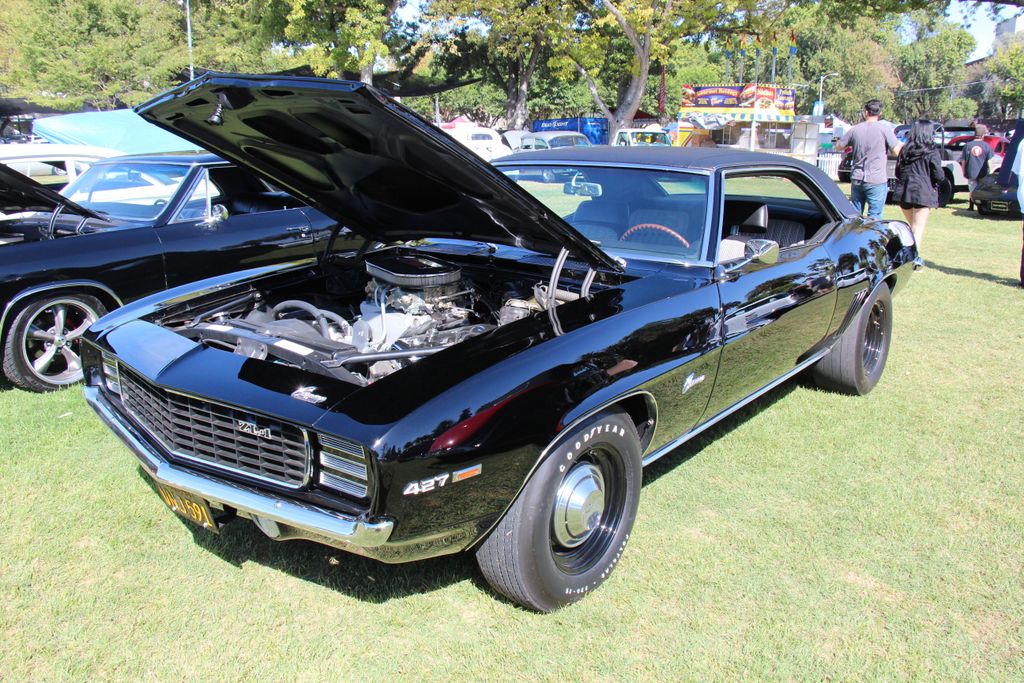
13. **1969 Chevrolet COPO Camaro ZL1**If ever a car personified the spirit of covert, factory-backed drag racing, it’s the 1969 Chevrolet COPO Camaro ZL1. This wasn’t a machine for casual showroom browsing. The ZL1 was engineered with one singular purpose: to utterly dominate the drag strip. Born from Chevrolet’s clandestine COPO program, it was their ultimate weapon, designed to remain under the radar while leaving competitors gasping.
At the heart of this mythical Camaro lay a truly revolutionary engine: the 427-cubic-inch all-aluminum big-block. This wasn’t merely powerful; it was a marvel of lightweight engineering. Significantly lighter than most iron-block engines, it provided a colossal advantage in power-to-weight ratio. Officially rated around 430 horsepower – famously understated – many insiders knew these engines delivered closer to a staggering 500 horsepower. That’s the power that warps reality on the quarter-mile.
Only 69 of these incredible machines were ever built under the COPO program, making them incredibly rare and universally feared on the drag strip. This scarcity elevated them to legendary status. Out of the box, the ZL1 was capable of quarter-mile times in the low-12s—an astonishing feat for a street-legal car. It could run toe-to-toe with dedicated drag cars, all while carrying a license plate.
The 1969 Chevrolet COPO Camaro ZL1 was more than just a car; it was a statement. It demonstrated that Chevrolet, even under corporate constraints, could produce a machine of unmatched performance and exclusivity. Its blend of cutting-edge engine technology, lightweight construction, and sheer brute force solidified its place as one of the most significant and coveted factory drag cars in automotive history. It remains a legend in racing circles, a ghost that haunts many a competitor’s dreams.
Car Model Information: 2018 Chevrolet Camaro 1LS
Name: Chevrolet Camaro
Manufacturer: Chevrolet
Production: 1966–2002,2009–2023
ModelYears: 1967–2002,2010–2024
Class: Pony car
BodyStyle: coupe,convertible
Platform: GM F platform,GM Zeta platform,GM Alpha platform
Layout: Front-engine, rear-wheel-drive layout
Categories: 1970s cars, 1980s cars, 1990s cars, 2+2 coupés, 2000s cars
Summary: The Chevrolet Camaro is a mid-size American automobile manufactured by Chevrolet, classified as a pony car. It first went on sale on September 29, 1966, for the 1967 model year and was designed to compete with the Ford Mustang. The Camaro shared its platform and major components with the Firebird, produced by General Motors’ Pontiac division that was also introduced for the 1967 model year.
Four distinct generations of the Camaro were developed before production ended in 2002. The nameplate was revived on a concept car that evolved into the fifth-generation Camaro; production started on March 16, 2009.
Production of the sixth generation of the Camaro ended in December 2023, for the 2024 model year.
Get more information about: Chevrolet Camaro
Buying a high-performing used car >>>
Brand: Chevrolet Model: Camaro
Price: $18,785 Mileage: 69,196 mi.
Read more about: Gearhead God: A High-Octane Tour Through John Cena’s Legendary American Muscle Car Empire
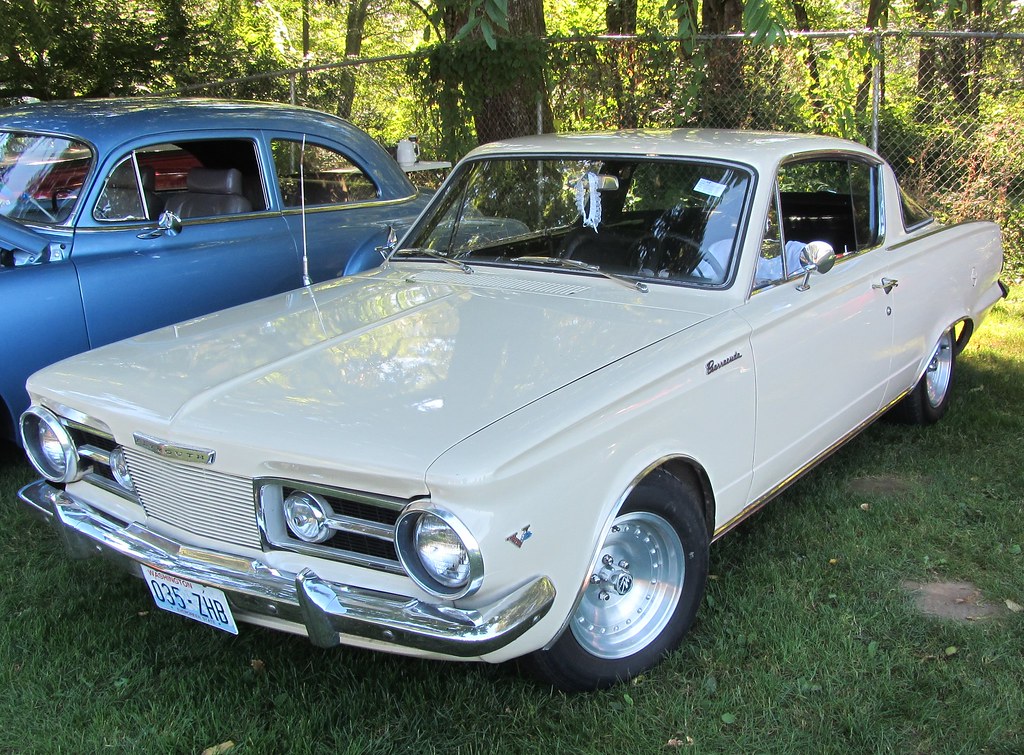
14. **1968 Plymouth Barracuda Super Stock**When Chrysler committed to dominating drag racing, they did so unequivocally, and the 1968 Plymouth Barracuda Super Stock stands as a roaring testament to that resolve. This wasn’t just another Barracuda; it was a meticulously crafted, lightweight weapon, designed to annihilate competition in NHRA Super Stock. Chrysler collaborated with the legendary Hurst Performance to transform stripped-down Barracuda bodies, infusing them with pure, unadulterated Hemi power.
Beneath its fiberglass front end—installed to save every precious ounce—resided the formidable 426 Hemi. While officially listed at a “modest” 425 horsepower, its true output in competition trim soared much higher. Interiors were thoroughly gutted, devoid of anything non-essential to speed. These cars were even famously factory-shipped with headers in the trunk, primed for immediate installation and track duty. This machine signaled serious intent from the moment it left the assembly line.
The extreme engineering approach yielded phenomenal results. In full competition setup, these Barracuda Super Stocks consistently tore down the quarter-mile in the breathtaking 10-second range. This blistering performance not only secured countless victories but also laid the foundation for Mopar’s lasting dominance in the NHRA Super Stock class. They weren’t just fast; they were an unstoppable force, redefining what a factory-backed drag car could truly achieve.
The 1968 Plymouth Barracuda Super Stock remains a rare and revered icon of drag racing. It encapsulates a golden era when manufacturers discarded caution, building machines solely for the thrill of victory. Its legacy is indelibly etched into the asphalt of countless dragways, a testament to Hurst’s expertise and Chrysler’s uncompromising dedication to delivering an unbeatable package. This Barracuda was, and endures as, a true quarter-mile legend.
Car Model Information: 1969 Plymouth Barracuda ‘CUDA
Caption: 1970 Hardtop Coupe
Name: Plymouth Barracuda
Manufacturer: Plymouth (automobile)
Production: 1964–1974
Assembly: Fenton, Missouri,Hamtramck, Michigan,Maywood, California,Windsor, Ontario
Layout: Front-engine, rear-wheel drive layout
Class: Pony car
Categories: 1970s cars, All articles with dead external links, All articles with unsourced statements, Articles with dead external links from February 2018, Articles with dead external links from January 2022
Summary: The Plymouth Barracuda is a two-door pony car that was manufactured by Chrysler Corporation from 1964 through 1974 model years.
The first-generation Barracuda was based on the Chrysler A-body and was offered from 1964 until 1966. A two-door hardtop (no B-pillar) fastback design, it shared a great majority of parts and bodywork with the Plymouth Valiant, except for the distinctive wraparound rear glass.
The second-generation Barracuda, though still Valiant-based, was heavily redesigned. Built from 1967 through 1969, it was available as a two-door in fastback, notchback, and convertible versions.
The third generation, offered from 1970 until 1974, was based on the Chrysler E-body, exclusive to it, and the slightly larger Dodge Challenger. A completely new design, the two-door Barracuda was available in hardtop and convertible body styles.
Get more information about: Plymouth Barracuda
Buying a high-performing used car >>>
Brand: Plymouth Model: Barracuda
Price: $142,965 Mileage: 3,152 mi.
Read more about: Inside Vanilla Ice’s Garage: A Deep Dive into the Rapper’s Eclectic and Multi-Million Dollar Automotive Collection
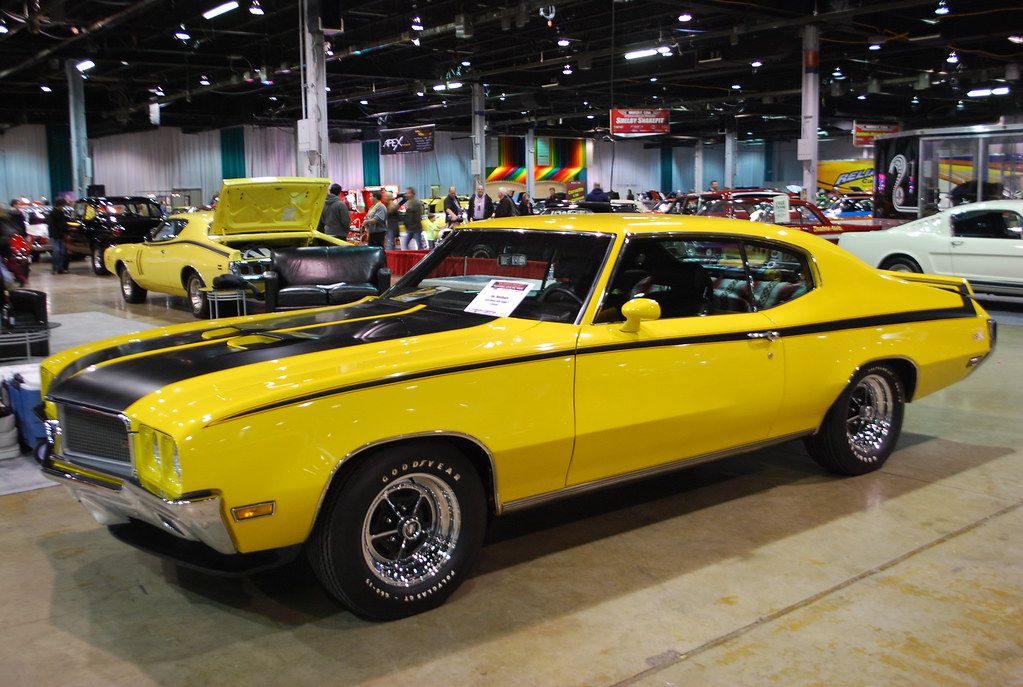
15. **1970 Buick GSX Stage 1**If you assumed Buick was only synonymous with comfortable cruising and refined elegance, prepare to have that notion spectacularly dismantled. The 1970 Buick GSX Stage 1 stormed onto the scene, determined to prove Buick could play fiercely in the cutthroat world of drag racing. This wasn’t merely a muscle car; it was a sophisticated, luxurious beast packing a brutal punch, often catching unsuspecting rivals off guard with its raw, understated power. It brought an air of refined menace to the strip.
At the heart of this stunning machine was Buick’s colossal 455-cubic-inch V8 engine, but in its special Stage 1 variant. This meant revised cylinder heads, a hotter camshaft, and a perfectly calibrated Rochester Quadrajet carburetor. While officially rated at a respectable 360 horsepower, its true magic lay in its torque. This engine unleashed a staggering *over 500 lb-ft of torque*, establishing it as one of the most potent torque monsters of its era. This immense twisting force enabled the GSX to launch with astonishing ferocity.
That mountainous torque directly translated into blistering showroom stock performance, making the GSX Stage 1 one of the quickest muscle cars available right off the dealership lot. It consistently ran mid-13s in the quarter-mile, a highly competitive figure that placed it squarely among the era’s heavy hitters. Its undeniable presence, complete with a functional hood tachometer and aggressive stance, screamed performance even when parked. Buick was clearly ready to rumble.
The 1970 Buick GSX Stage 1 serves as a powerful reminder that performance isn’t solely the domain of the usual suspects. It showed that Buick, often perceived as reserved, could indeed unleash a drag strip warrior blending brute force with unexpected refinement. Its rarity and unique mix of power and panache have solidified its status as a coveted collector’s item and a celebrated, if sometimes understated, icon of the muscle car era. It proved that sometimes, the quiet ones are the ones to truly watch at the start line.
Car Model Information: 2019 Hyundai SANTA FE 2.4 Ultimate
Name: Gran Sport
Logo: Buick gs emblem.png
Producttype: Performance car
Currentowner: General Motors
Producedby: General Motors
Introduced: [object Object]
Related: T-Type
Markets: U.S.
Categories: All Wikipedia articles in need of updating, All articles with unsourced statements, Articles with short description, Articles with unsourced statements from September 2020, Articles with unsourced statements from September 2025
Summary: The Gran Sport name has been used on several high-performance cars built by General Motors for its Buick brand since 1965. In the GM brands hierarchy, Buick was surpassed in luxury and comfort appointments only by Cadillac, which did not produce performance models. As a result, the Buick GS series were the most opulently equipped GM sport models of their era.
The Gran Sport performance enhancements on all Buick products during this era sought to affirm Buick’s tradition of producing powerful and comfortable products going back to the 1930s when all Buicks of the time were upgraded to the Buick Fireball Straight Eight, then installed the 278 cu in (4.6 L) Roadmaster engine in the shortest model Special and introduced the Century, known as “the banker’s hot rod” with a three speed synchromesh manual transmission. The Gran Sport sought to identify cars that were fun to drive with a luxury approach.
Get more information about: Buick Gran Sport
Buying a high-performing used car >>>
Brand: Buick Model: GSX Stage 1
Price: $21,898 Mileage: 51,164 mi.
Read more about: Beyond the Malaise: 15 Rare American Cars from the 1970s That Defied Expectations
And so, our adrenaline-fueled journey through the hallowed halls of drag racing history culminates, leaving us with profound appreciation for these magnificent machines. From the cunning rule-bending of the Dodge Coronet A990 to the stealthy ferocity of the COPO Camaro ZL1, and the surprising brute elegance of the Buick GSX Stage 1, each car we’ve explored refused to merely participate; they demanded victory. These weren’t just vehicles; they were engineering masterpieces, built with passion, ingenuity, and an unyielding competitive spirit that echoes across the decades. They carved their legacies one blistering quarter-mile at a time, forever cementing their place as the undisputed kings of the strip, proving that with enough horsepower and a dream, anything is possible on the asphalt.



